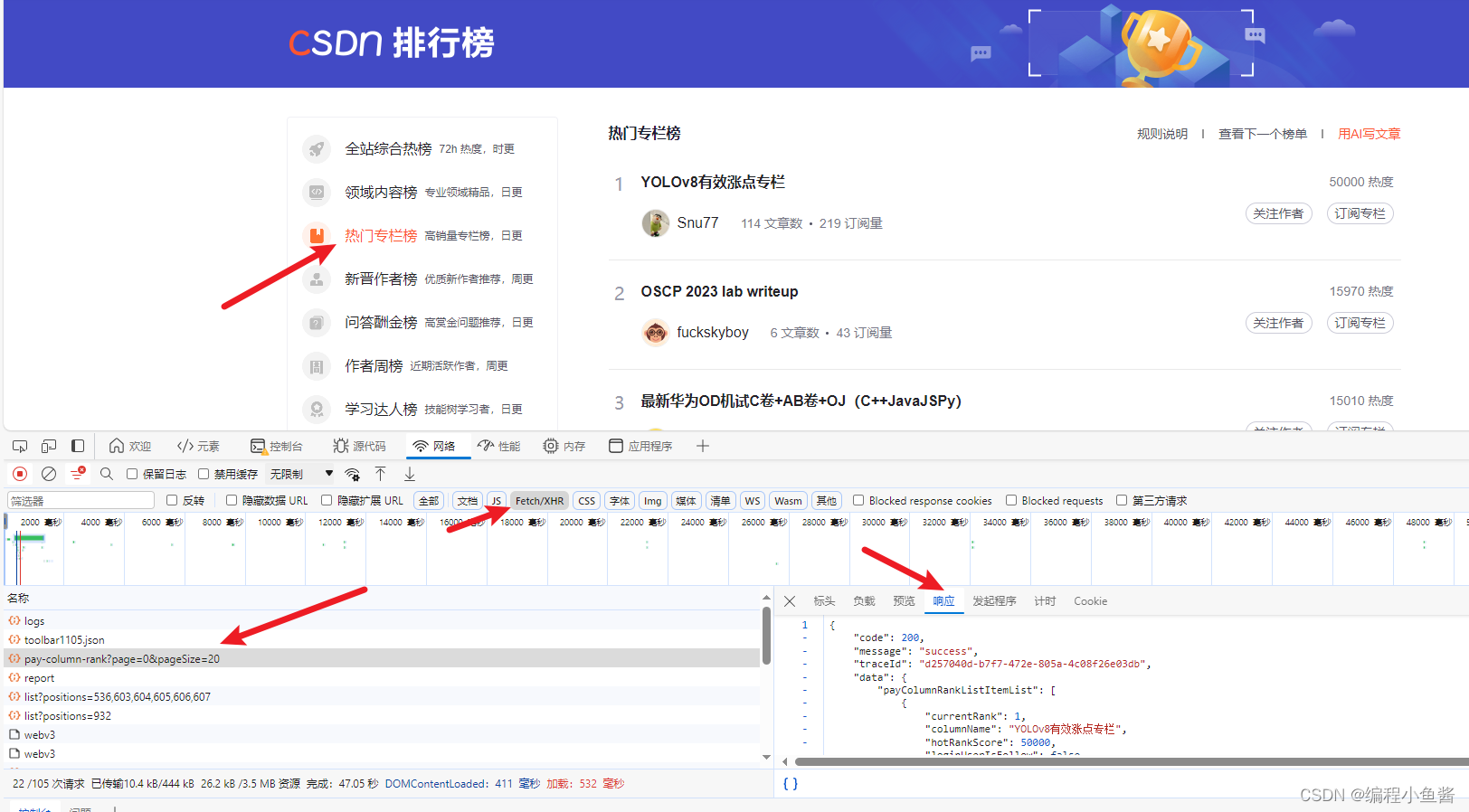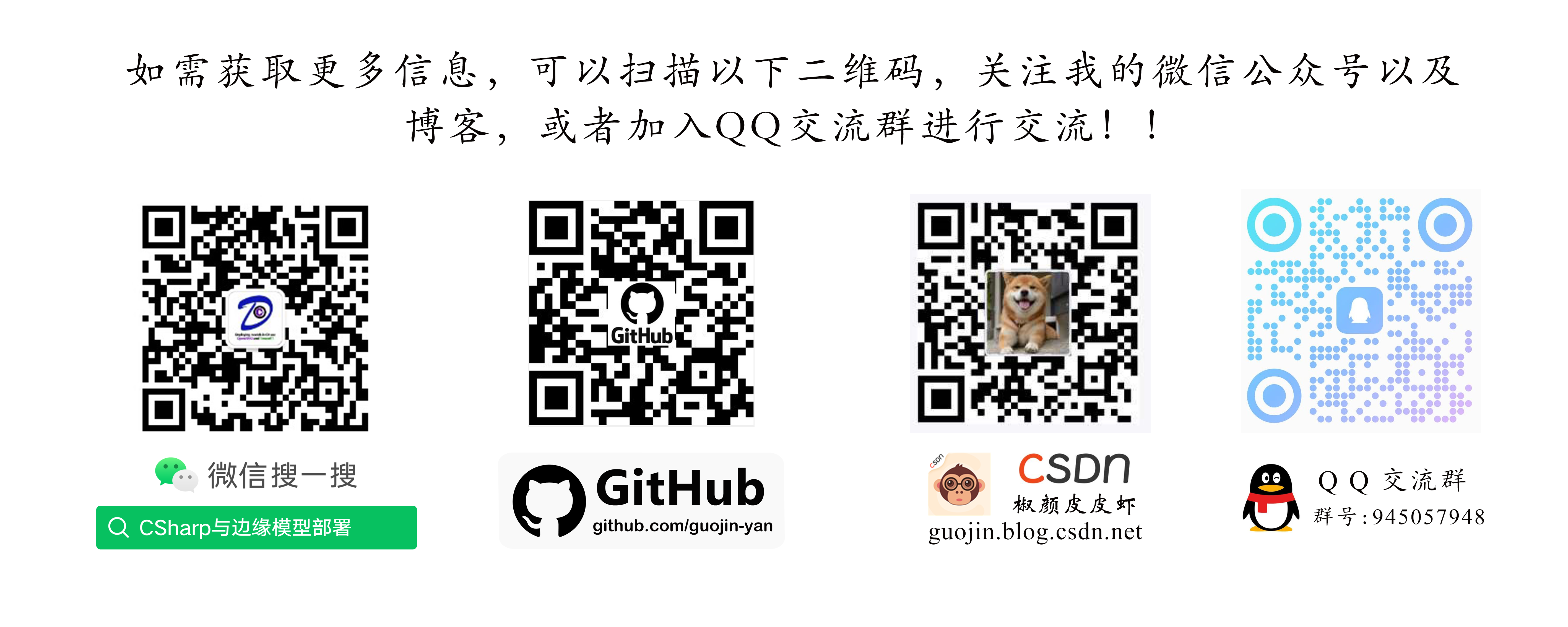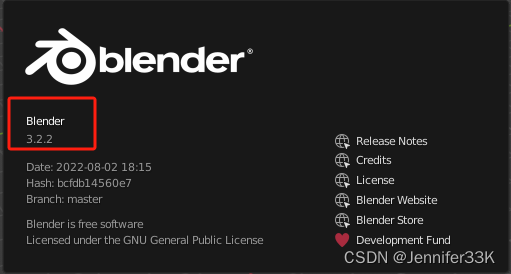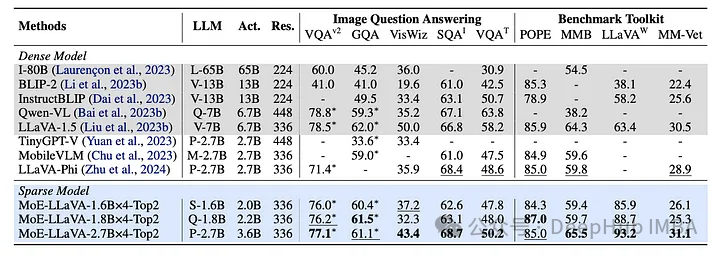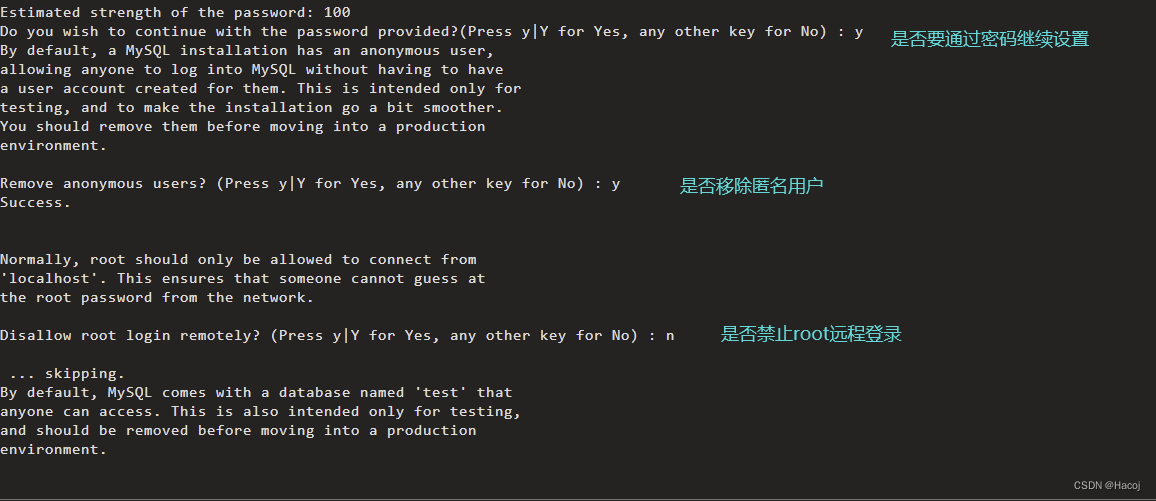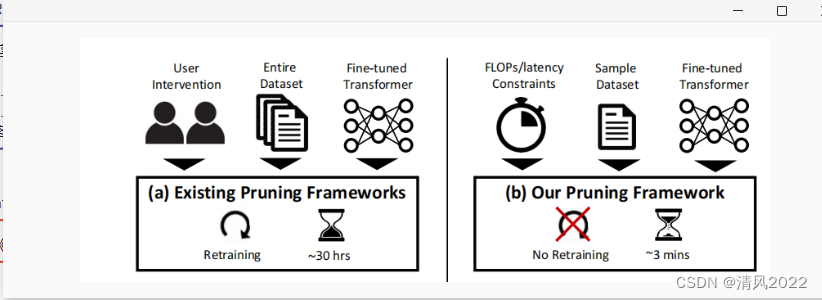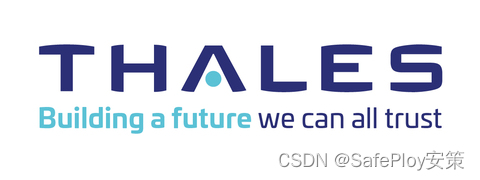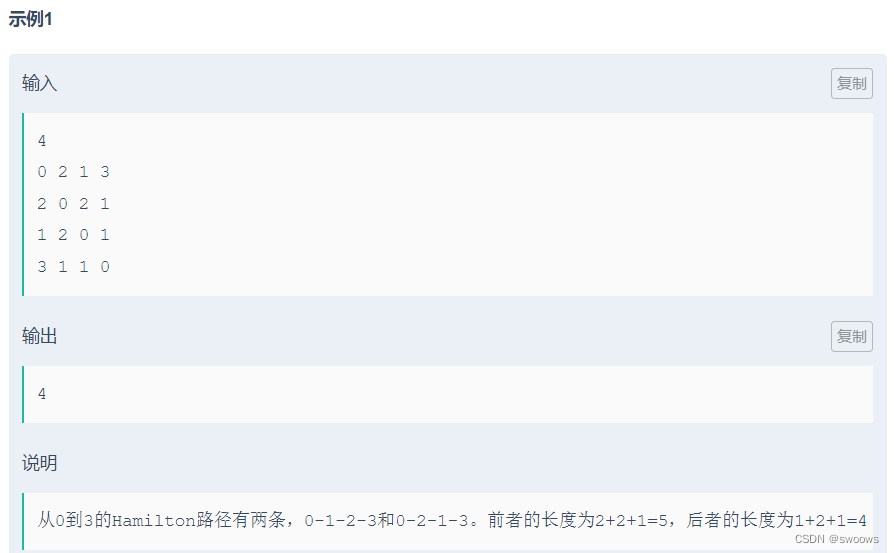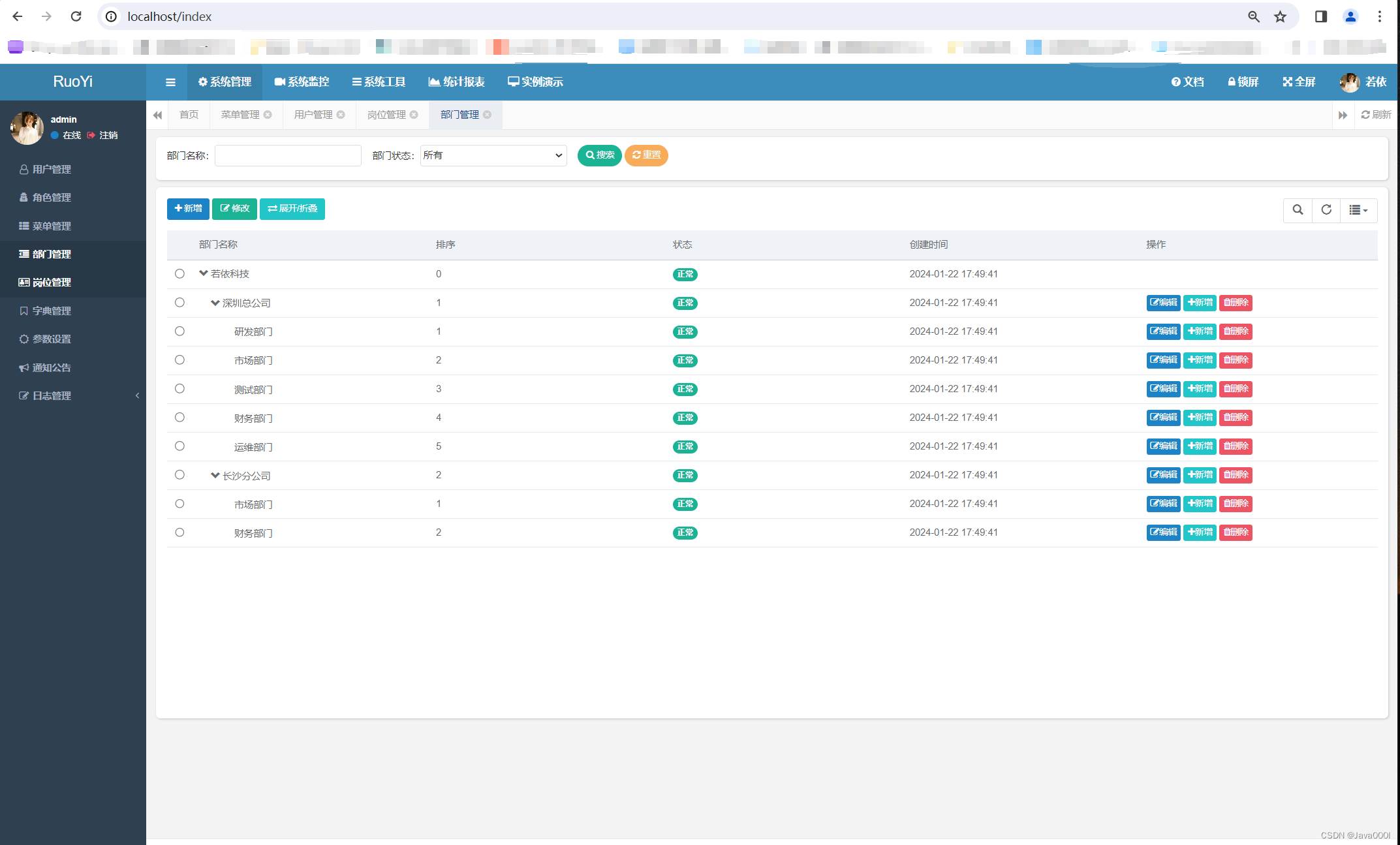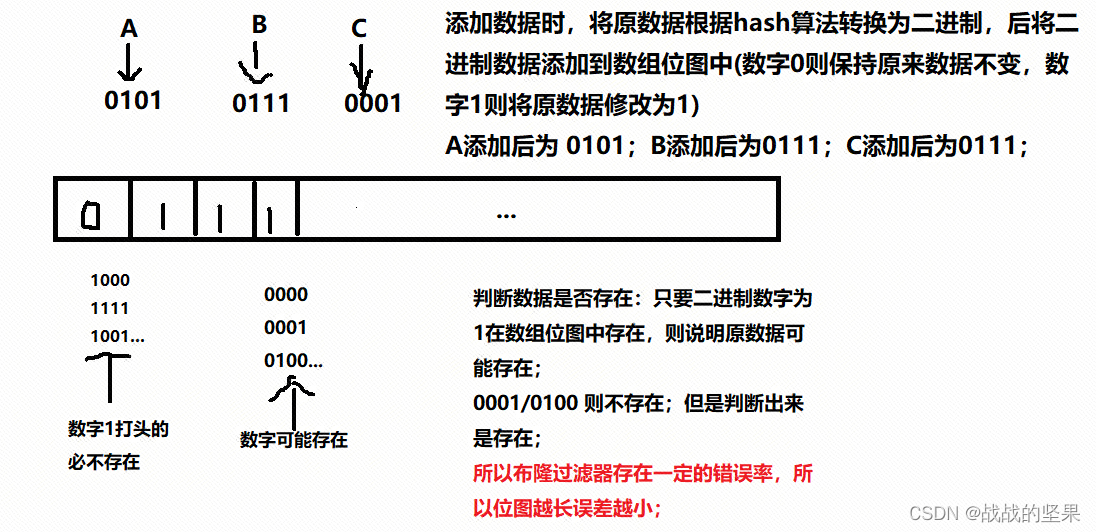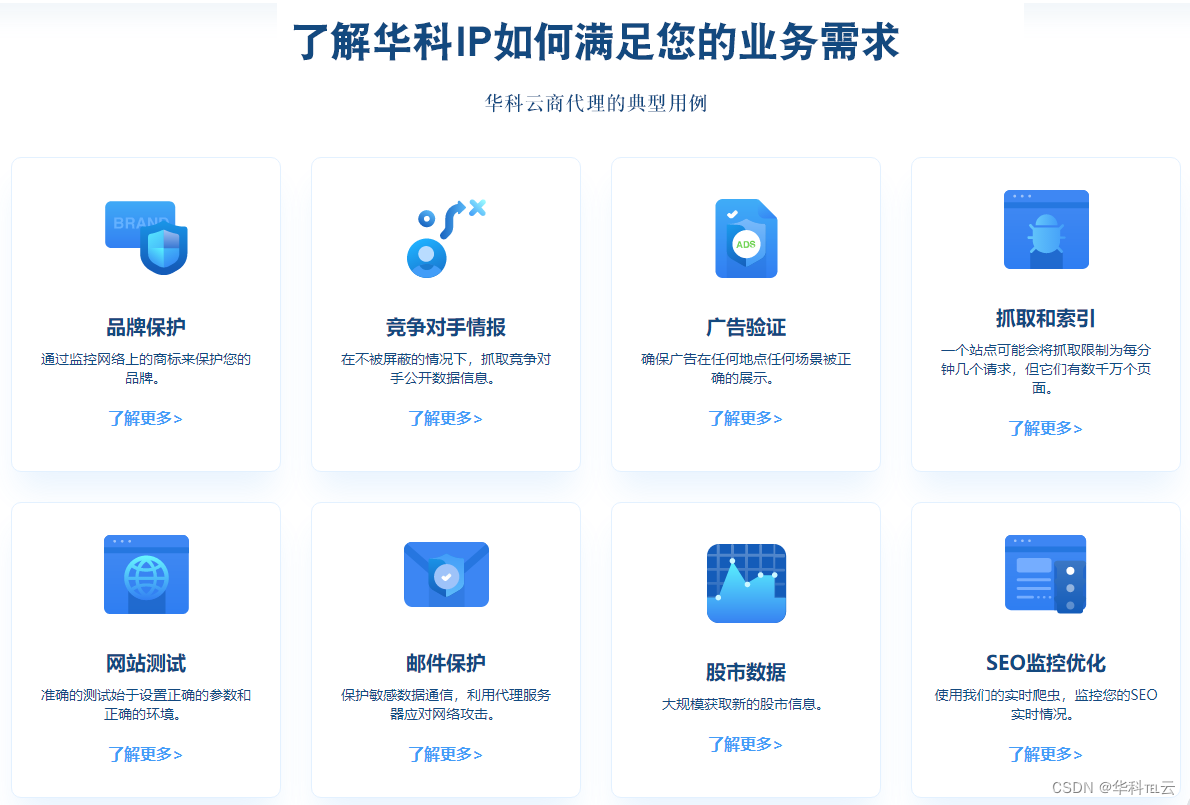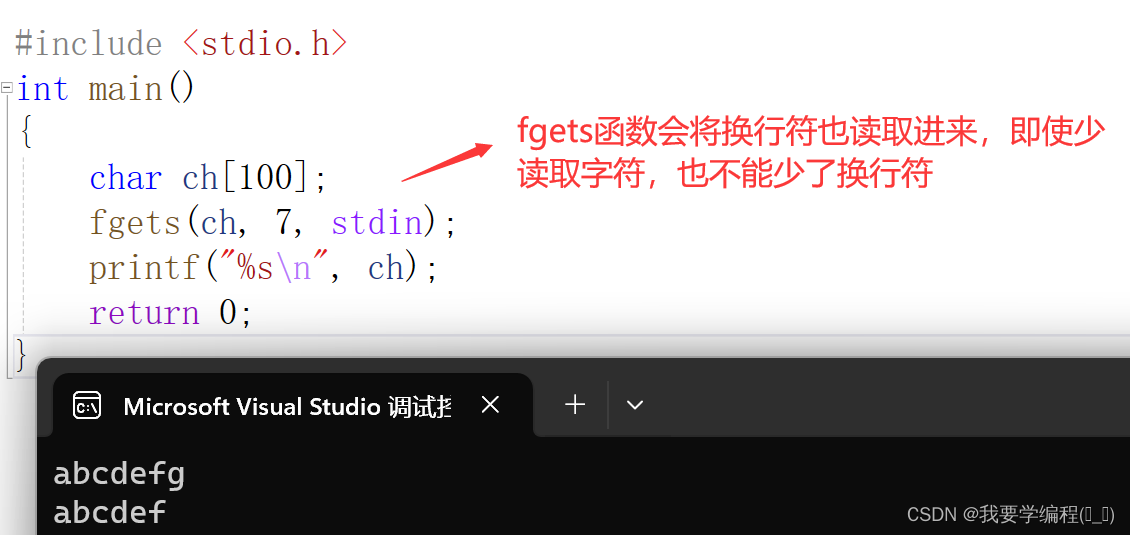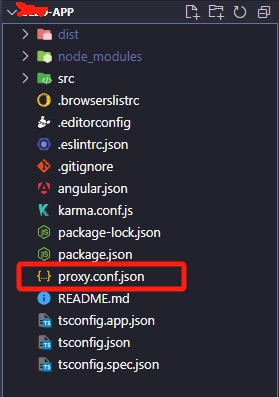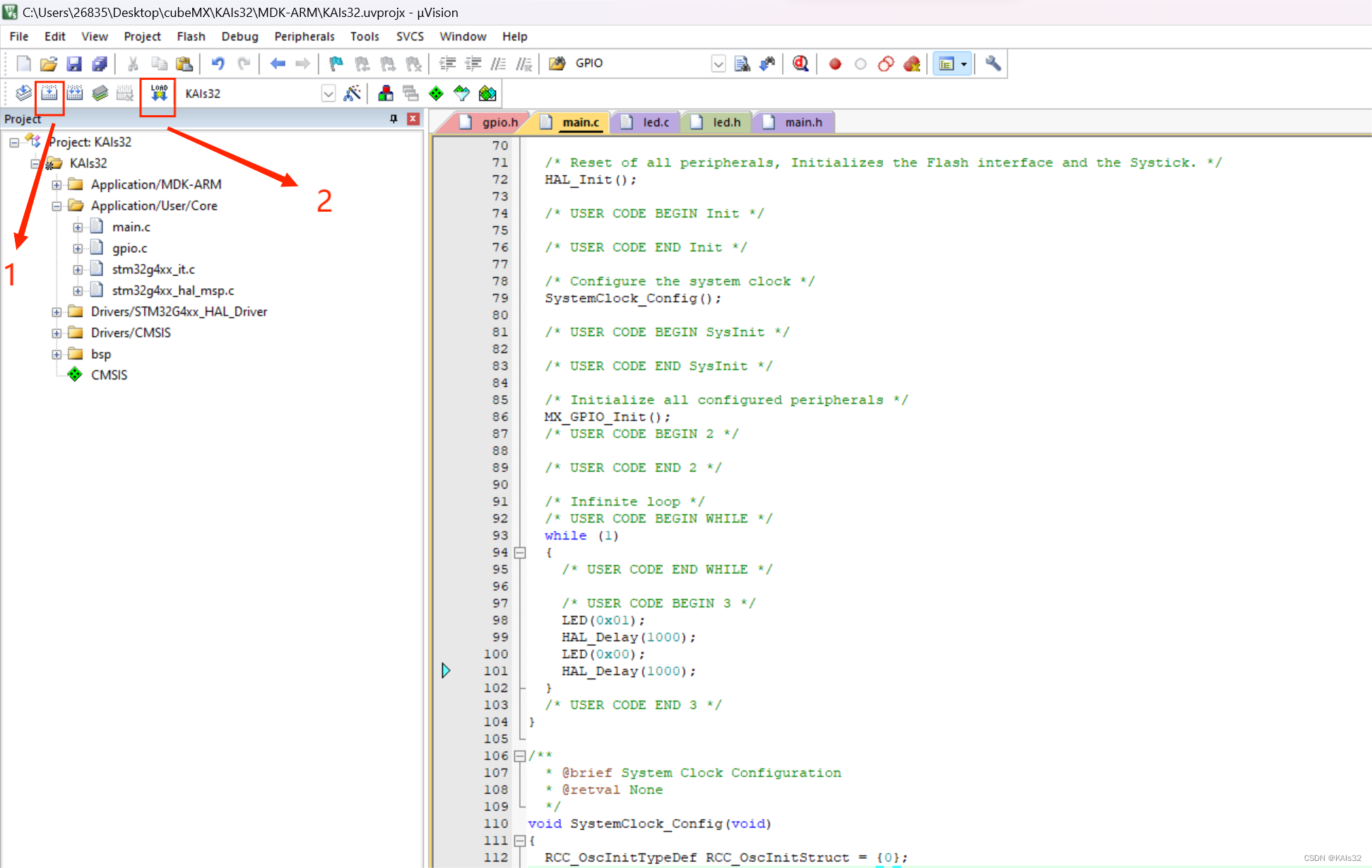文章目录
- 1.csdn付费专栏词云
- 2.浏览器抓包分析
- 3.API接口测试
- 4.需要使用的python库
- 5.爬虫与数据分析设计
- 6. 完整代码
- 7.最终的成果
- 8.惊人真相在这里
1.csdn付费专栏词云
我们如何分析csdn热门付费专栏呢?
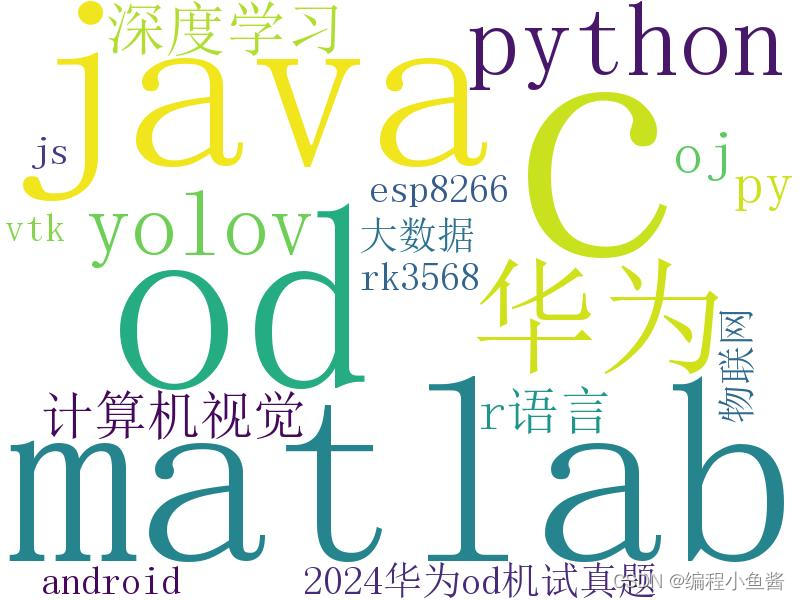
热门专栏是动态的,所以我们爬取的数据是一直变化的!
通过我的分析得出如下结论,热门付费的领域:
- 目标检测与计算机视觉:利用深度学习和图像处理技术,实现自动识别和定位目标物体的领域。
- 系统开发与嵌入式:涉及设计、开发和优化嵌入式系统,包括硬件和软件的集成。
- 数据科学与机器学习:通过分析和解释大量数据,利用机器学习算法构建模型,从中获取洞察和预测。
- 物联网与人工智能:将传感器、设备和网络连接起来,通过人工智能技术实现智能化的互联网应用。
- MATLAB应用:使用MATLAB编程语言和工具进行科学计算、数据分析、图像处理和模型开发等应用。
2.浏览器抓包分析
- 1.我们首先找到CSDN排行榜页面
https://blog.csdn.net/rank/list/total
浏览器打开F12,点击网络

- 我们停靠放上改为上下结构,如我上图

- 点击如下图
首先我们点击热门专栏,然后我们点击Fetch/XHR,查看所有的网络请求
通过分析我们可以知道
- 分析结果如下
https://blog.csdn.net/phoenix/web/blog/pay-column-rank?page=0&pageSize=20

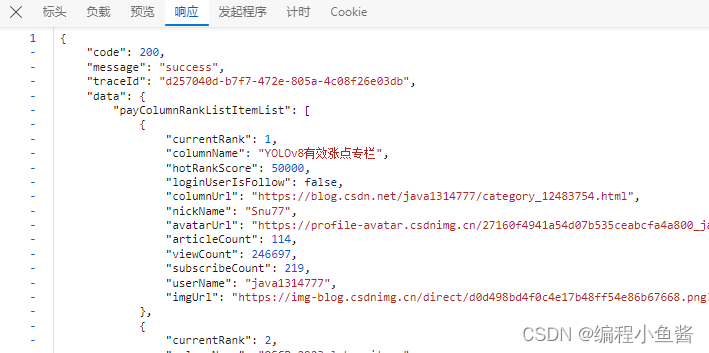
3.API接口测试
我测试了
- https://blog.csdn.net/phoenix/web/blog/pay-column-rank?page=0&pageSize=20
- https://blog.csdn.net/phoenix/web/blog/pay-column-rank?page=0&pageSize=100
- https://blog.csdn.net/phoenix/web/blog/pay-column-rank?page=0&pageSize=200
通过测试发现,最多只能给到100个热门付费专栏数据
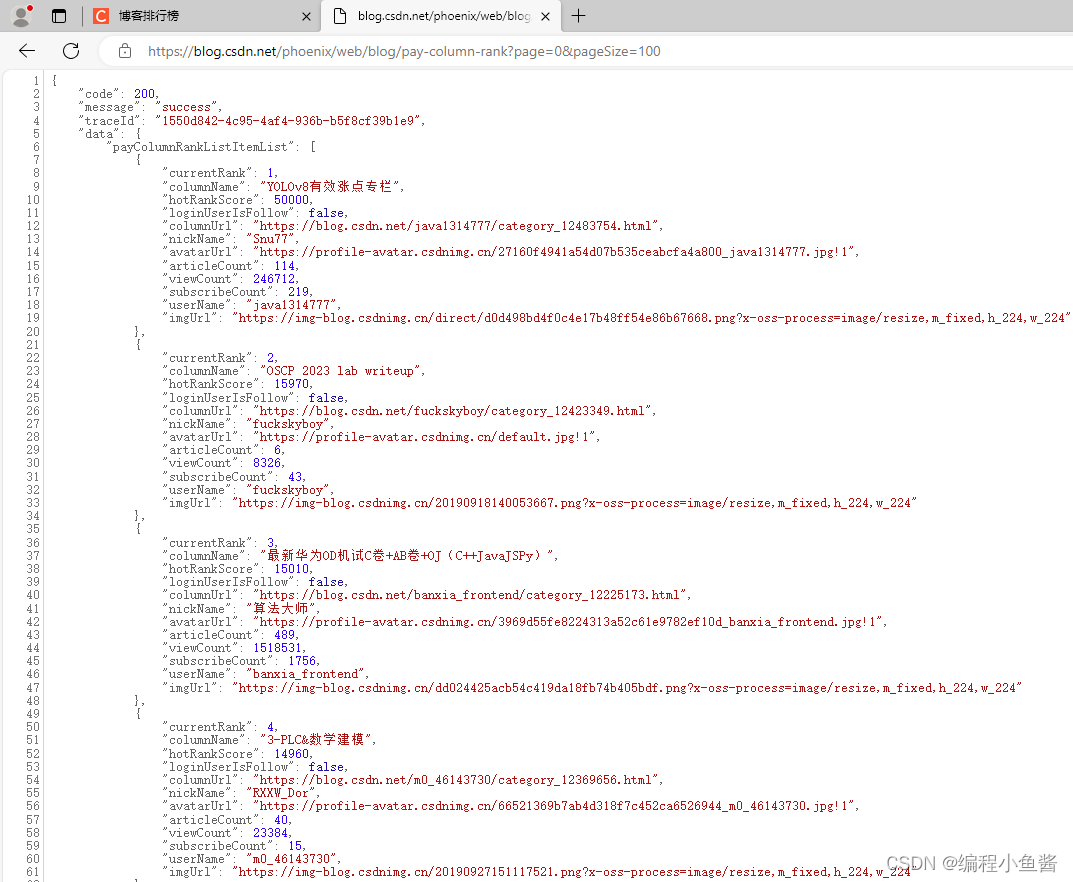
4.需要使用的python库
-
requests: 用于发送HTTP请求和处理响应的库。它可以用于与Web服务进行交互,例如获取网页内容或发送API请求。
-
pandas: 提供了用于数据操作和分析的数据结构和函数。它是一个功能强大的库,用于处理和分析结构化数据,例如表格数据。
-
wordcloud: 用于生成词云图的库。词云图是一种可视化形式,通过展示文本中出现频率较高的单词,以图形化的方式呈现文本数据。
-
matplotlib:
用于创建静态、动态和交互式的可视化图表的库。它提供了各种绘图选项,可以用于创建线图、散点图、条形图、饼图等各种类型的图表。
pip install requests
pip install pandas
pip install wordcloud
pip install matplotlib
5.爬虫与数据分析设计
- 首先我们需要做个爬虫,爬取API获取出的网络排行榜
import requests
import json
API_RANK = "https://blog.csdn.net/phoenix/web/blog/pay-column-rank"
# Http代理头
HTTP_headers = {
'User-Agent': 'Mozilla/5.0 (Linux; Android 6.0; Nexus 5 Build/MRA58N) AppleWebKit/537.36 (KHTML, like Gecko) Chrome/120.0.0.0 Mobile Safari/537.36'
}
params = {'page': '0',
'pageSize': 100}
response = requests.get(API_RANK, params=params, headers=HTTP_headers)
print("http:", response.url)
print("Status Code:", response.status_code)
print("Response Text:", response.text)
- 我尝试把我们抓取到的数据写到excel中,我们来进行分析
import requests
import json
import pandas as pd
API_RANK = "https://blog.csdn.net/phoenix/web/blog/pay-column-rank"
# Http代理头
HTTP_headers = {
'User-Agent': 'Mozilla/5.0 (Linux; Android 6.0; Nexus 5 Build/MRA58N) AppleWebKit/537.36 (KHTML, like Gecko) Chrome/120.0.0.0 Mobile Safari/537.36'
}
params = {'page': '0',
'pageSize': 100}
response = requests.get(API_RANK, params=params, headers=HTTP_headers)
data = response.json()
print("http:", response.url)
print("Status Code:", response.status_code)
print("Response Text:", response.text)
def save_data_to_excel(data):
df = pd.DataFrame(data)
df.to_excel('data.xlsx', index=False)
print("数据已成功保存到 data.xlsx 文件")
save_data_to_excel(data['data']["payColumnRankListItemList"])
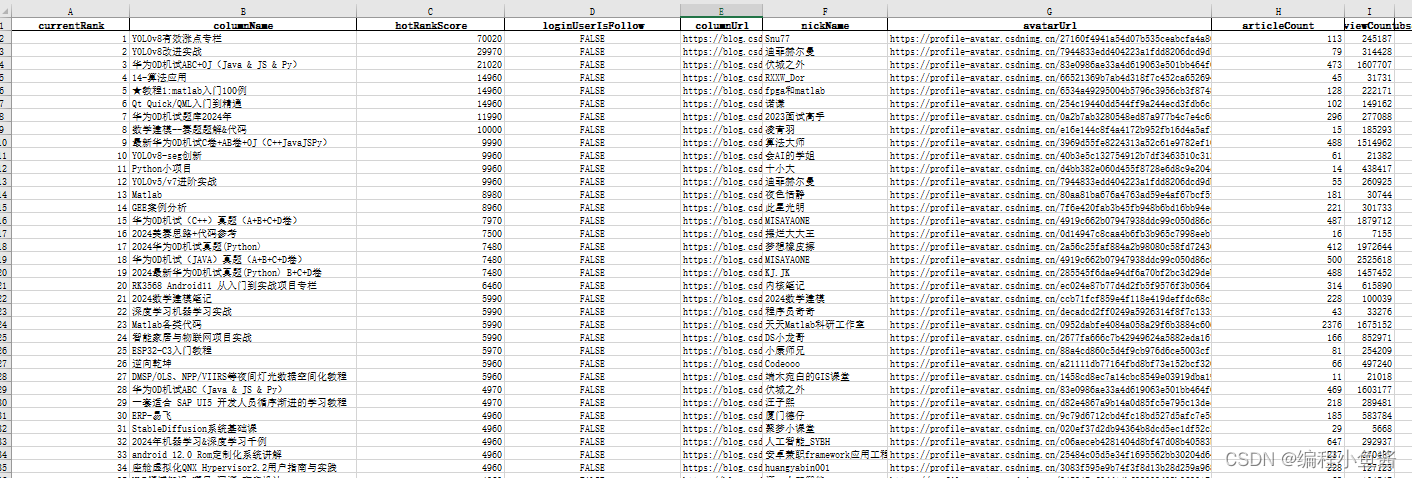
-
我们要分析高频词汇
- 1.不可以分析高频词汇的时候拆分(C++,C#,OD等字样)
- 2.根据高频词汇的出现数量来排名
def extract_top_keywords(,titles, fixed_words=None, min_count=2):
fixed_words = {"OD", "C#", "JAVA", "C++", "华为", "Python"}
# 创建自定义词汇表
custom_vocab = set(fixed_words) if fixed_words else set()
# 分词和清洗标题
words = []
for title in titles:
# 使用正则表达式提取单词和数字
tokens = re.findall(r'\w+', title)
# 将单词转换为小写
tokens = [token.lower() for token in tokens]
# 将固定词汇作为整体添加到词汇表中
for word in fixed_words:
if word.lower() in title.lower():
tokens.append(word.lower())
words.extend(tokens)
# 统计词频
word_counts = Counter(words)
# 根据词频排序
sorted_words = sorted(word_counts.items(), key=lambda x: x[1], reverse=True)
# 获取高频关键字和词汇
top_keywords = [word for word, count in sorted_words if count >= min_count]
return top_keywords
def writePng(pic, title_list):
# 将标题列表转换为字符串
text = ' '.join(title_list)
# 设置中文字体路径
font_path = 'C:\\Windows\\Fonts\\simsun.ttc' # 替换为你的中文字体路径
# 创建词云对象并设置参数
wc = WordCloud(font_path=font_path, background_color='white', width=800, height=600)
# 生成词云
wc.generate(text)
# 显示词云
plt.imshow(wc, interpolation='bilinear')
plt.axis('off')
plt.show()
# 保存词云文件
wc.to_file(pic)
6. 完整代码
import requests
import json
import pandas as pd
import re
from collections import Counter
from wordcloud import WordCloud
import matplotlib.pyplot as plt
API_RANK = "https://blog.csdn.net/phoenix/web/blog/pay-column-rank"
# Http代理头
HTTP_headers = {
'User-Agent': 'Mozilla/5.0 (Linux; Android 6.0; Nexus 5 Build/MRA58N) AppleWebKit/537.36 (KHTML, like Gecko) Chrome/120.0.0.0 Mobile Safari/537.36'
}
# http get 封装
class HttpRequest:
header = None
def __init__(self):
return
def request(self, URL, PARAMS):
response = requests.get(URL, params=PARAMS, headers=HTTP_headers)
print("http:", response.url)
print("Status Code:", response.status_code)
print("Response Text:", response.text)
try:
data = response.json()
return data
except json.JSONDecodeError:
print("Error: The response is not in JSON format.")
return None
class CSDNDataFetcher:
def __init__(self):
return
def setHttpRequest(self, request):
self.csdnGeter = request
return
# 获取排行榜
def getRank(self, size):
params = {
'page': '0',
'pageSize': size}
data = self.csdnGeter.request(API_RANK, params)
return data
# 保存到excel中
def save_data_to_excel(self, data):
df = pd.DataFrame(data)
df.to_excel('data.xlsx', index=False)
print("数据已成功保存到 data.xlsx 文件")
def read_column_from_excel(self, file_path, sheet_name, column_name):
df = pd.read_excel(file_path, sheet_name=sheet_name)
column_data = df[column_name].tolist()
return column_data
def extract_top_keywords(self, titles, fixed_words=None, min_count=2):
fixed_words = {"OD", "C#", "JAVA", "C++", "华为", "Python","Matlab","Qt"}
# 创建自定义词汇表
custom_vocab = set(fixed_words) if fixed_words else set()
# 分词和清洗标题
words = []
for title in titles:
# 使用正则表达式提取单词和数字
tokens = re.findall(r'\w+', title)
# 将单词转换为小写
tokens = [token.lower() for token in tokens]
# 将固定词汇作为整体添加到词汇表中
for word in fixed_words:
if word.lower() in title.lower():
tokens.append(word.lower())
words.extend(tokens)
# 统计词频
word_counts = Counter(words)
# 根据词频排序
sorted_words = sorted(word_counts.items(), key=lambda x: x[1], reverse=True)
# 获取高频关键字和词汇
top_keywords = [word for word, count in sorted_words if count >= min_count]
return top_keywords
def writePng(self, pic, title_list):
# 将标题列表转换为字符串
text = ' '.join(title_list)
# 设置中文字体路径
font_path = 'C:\\Windows\\Fonts\\simsun.ttc' # 替换为你的中文字体路径
# 创建词云对象并设置参数
wc = WordCloud(font_path=font_path, background_color='white', width=800, height=600)
# 生成词云
wc.generate(text)
# 显示词云
plt.imshow(wc, interpolation='bilinear')
plt.axis('off')
plt.show()
# 保存词云文件
wc.to_file(pic)
#创建
r = HttpRequest()
obj = CSDNDataFetcher()
obj.setHttpRequest(r)
data = obj.getRank(100)
obj.save_data_to_excel(data['data']["payColumnRankListItemList"])
text = obj.read_column_from_excel("data.xlsx", "Sheet1", "columnName")
tiles = obj.extract_top_keywords(text)
obj.writePng("test.jpg", tiles)
7.最终的成果
你们真的好卷!!!
为了资本卷!!!
为了技术卷!!!
年底分多少钱!!!
今年加多少班!!!
绩效怎么样!!!
沉淀沉淀吧,有些事我都不知道怎么说。
 )
)
-
目标检测与计算机视觉:YOLOv8、YOLOv5、YOLOv8-seg是目标检测算法的不同版本,芒果改进YOLO进阶指南和YOLOv8改进实战专栏提供了关于目标检测算法的改进和实践经验。此外,深度学习、点云处理、计算机视觉等也是与目标检测相关的热门领域。
-
系统开发与嵌入式:华为OD机试专栏、Android开发、Autosar、FPGA、单片机、ARM开发等专栏涉及了系统开发、嵌入式开发、底层编程等方面的内容,适合对系统开发和嵌入式技术感兴趣的人。
-
数据科学与机器学习:包括Python、R语言、XGBoost、BP神经网络、时间序列分析(ARIMA和GARCH)等专栏,涵盖了数据科学、机器学习、深度学习等领域的内容,适合对数据分析和机器学习算法感兴趣的人。
-
物联网与人工智能:智能家居与物联网项目实战、物联网AIOT、ESP8266/ESP32等专栏关注物联网应用和物联网设备的开发,同时涉及到与人工智能相关的技术。
-
MATLAB应用:MATLAB专栏提供了各类MATLAB代码和工具的使用,适合对MATLAB编程和应用感兴趣的人。
8.惊人真相在这里
😳😳😳😳😳😳
你们好卷,再见!
